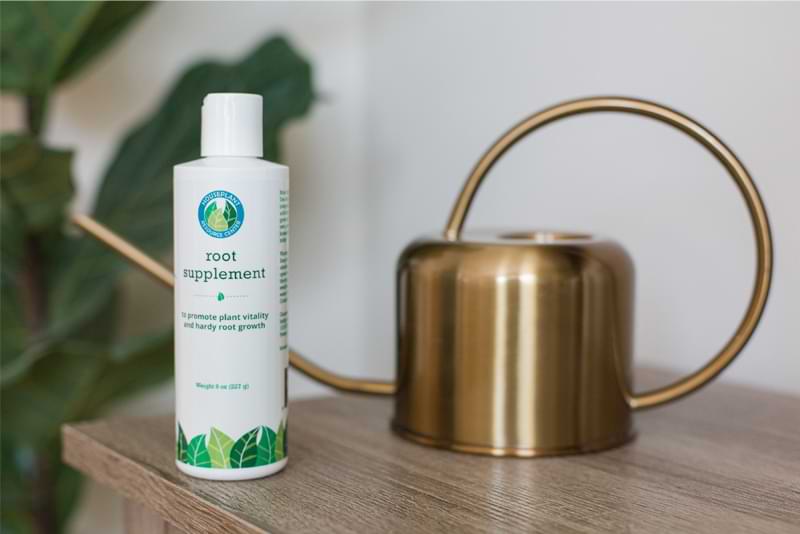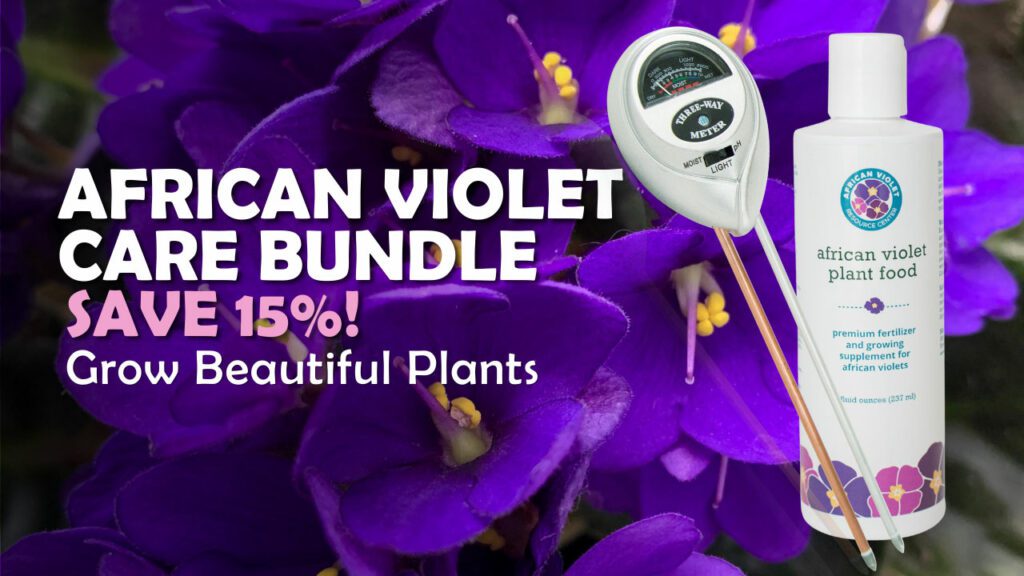African violets are a popular houseplant because of their vibrant blooms and ease of care. But even with careful attention, African violets can suffer from various crown problems. In this article, we’ll discuss some of the most common African violet crown problems and how to prevent or treat them. From root rot to stem breakage, we’ll explain why these issues occur and how to take better care of your African violets so they stay healthy and beautiful.
African Violet Crown or Root Rot
African Violet crown or root rot is a problem that can affect your plant and it can happen rather quickly. The problem is caused by a fungus that attacks the roots and crown of the plant. This can cause the leaves to turn yellow and fall off, the stem to rot, and the flowers to wilt. We will cover some important information and tips on how to spot crown or root rot, how to treat it, and how to prevent it, so keep reading to learn more!
Symptoms
If you suspect your plant has a Crown Rot infection, there are a few key symptoms to look for:
- Black or brown spots on the leaves
- Yellowing and wilting of the leaves
- Mushy or soft stem near the base of the plant
- Foul odor coming from the soil
If you see these symptoms in your African Violet, it’s best to investigate and fix the problem as soon as possible. This isn’t something that will kill your plant within minutes, but if left for too long it will certainly do a lot of harm to it.
Causes
There are several things that can cause crown problems in African violets. One of the most common is too much water. When the soil stays wet for too long, it can start to break down and rot the roots. This can lead to a whole host of problems, including yellowing leaves, wilting, and even death.
Another common cause of crown problems is over-fertilizing. If you give your plant too much fertilizer, it can burn the roots and damage the plant. This can also lead to yellowing leaves, wilting, and death.
Finally, crown rot can also be caused by pests or diseases. These include fungi like Botrytis cinerea and Rhizoctonia solani, as well as bacteria like Pseudomonas syringae pv. violacea. If your plant has any of these problems, it’s important to get rid of them as soon as possible to prevent further damage.

Treatment
There are several things you can do to treat common African violet crown problems. If your plant has root rot, you can try to save it by removing the affected roots and replanting in fresh soil. If your plant has leaf spot, you can remove the affected leaves and treat with a fungicide. If your plant has stem rot, you can cut off the affected parts and hope that the plant will regenerate new growth.
It’s always suggested to use a high quality fungicide and a root supplement to ensure your plant gets the care it needs to recover from a crown problem.
If your plant has a lot of damage, you may need to trim away all of the damaged areas to give your plant the best chance of survival, even if it means removing more than half of the existing plant. Be warned, though, this could send the plant into shock, which is difficult to recover from.
Prevention
Prevention is always the best medicine, and this is especially true when it comes to the delicate nature of the African violet. By taking some simple precautions, you can avoid many of the most common crown problems.
One of the most important things you can do is to water your African violet from the bottom. This allows the roots to absorb moisture without the leaves getting wet, which can lead to crown rot. It’s also a good idea to fertilize your plant with an African Violet Plant Food that is formulated specifically for African violets.
If you notice any yellowing or wilting leaves, it’s important to remove them promptly. These leaves can harbor diseases that can spread to the rest of the plant. It’s also a good idea to remove any dead flowers, as they can also harbor diseases.
By following these simple tips, you will go a long way to preventing possible crown rot or root rot for your African violet.
Tight Crown
There are several reasons why an African violet’s crown might be tight. This is distinguishable by looking at the center of the plant. A tight crown will have many smaller leaves that seem to be crowding the middle of the plant.
Symptoms
The main symptom of a tight crown is the center leaves growing tightly together, and there is no space in between the leaves. Additionally, if a tight crown isn’t resolved, it can lead to symptoms like leaf yellowing and even crown rot, as there is less space for air to flow through the plant, which can then lead to symptoms like:
- Wilting leaves
- Yellowing leaves
- Brown or black spots on leaves
- Leaves falling off
Causes
The most common reason for a tight crown is that the plant is getting too much of either fertilizer, light, or heat. It can also be caused by not having your plant in the right soil.
Too much fertilizer can cause a tight crown in your African violet. If this is the cause, you may also see straight leaves with no curve in them, rust colored leaves, or even a salt crust or crystals on the surface of the soil or on the leaves.
If your plant is getting too much light, you’ll also see the leaves drooping down, possibly curling inward, and the other leaves may be crowding together as well.
Too much heat can be detrimental to a plant, and the way to tell if this is the problem is by looking for streaking in the leaves, or dulling in color, outer leaves drying up, even getting crispy and falling off, or if plant growth stops or slows significantly.
If your African violet doesn’t have the right soil, it may develop a tight crown along with slow growth and an absence of other symptoms listed above.
Treatment
There will be a different treatment plant depending on the cause of your African violet’s tight crown. If you’ve investigated the causes and decided that your plant is suffering from one of the causes listed above, simply do the opposite of that cause and it should help your plant get on the road to recovery. For example, if your plant is getting too much light, limit the light exposure or drape a sheer curtain somewhere between the plant and the light source.
Additionally, you will want to treat your plant for possible disease as a result of being exposed to the causes listed here. A root supplement would also help your plant recover even faster, getting you those beautiful blooms sooner.
Prevention
Prevention is always the best medicine, and this is especially true when it comes to African violets. By taking a few simple precautions, you can avoid many of the most common crown problems.
First, be sure to water your plants properly. African violets need to be kept moist, but not wet. Allow the soil to dry out slightly between waterings. Using a moisture meter before and after watering will ensure your plant gets the right amount of water, and will take the guesswork out of when to water your plant.
Second, provide adequate lighting for your plants. They need bright, indirect light in order to bloom well. If they don’t get enough light, they may become etiolated, or stretchy.
Third, fertilize regularly with a balanced African Violet Plant Food specifically designed for African violets. This will help them to stay healthy and blooming continuously.
Finally, don’t forget to deadhead your plants. This means removing spent blooms as well as any yellow or brown leaves. Deadheading will encourage your plant to produce more flowers.
Crown Shape Becomes Distorted
A distorted crown can be unsightly, but unless the problem has gotten way out of hand, it’s not likely to be too serious. Distortion can be anything from a section of crown that has rotted and died off, or elongated stems making it look like the plant is reaching out, away from the center crown.
Causes
If your African violet’s crown becomes distorted, it is likely due to one of two things: either the plant is not getting enough light, or it is getting too much water. If your plant is not getting enough light, the leaves will become elongated and the stem will stretch out in an attempt to reach the light. If your plant is getting too much water, the leaves will become soft and mushy and may fall off. It’s a fairly easy crown problem to diagnose, and similarly, it’s typically very easy to fix, also.
Treatment
Treating African violet crown distortion is not really that tricky. If you believe it’s caused by not getting enough light, simply place the plant somewhere it can get more light, or supplement the light it does get with some grow lights. If it’s due to overwatering, back off on the amount or frequency of your watering, and use a moisture meter to ensure it’s ready to be watered again.
What To Do With Side Shoots And Suckers
Side shoots and suckers should be removed to ensure your plant can dedicate all of its energy to producing those beautiful blooms that you likely bought the plant for in the first place.
To remove suckers, cut them off at the base with a sharp knife or pruning shears. Make sure to sterilize your cutting tool before and after use to avoid spreading diseases. You can also use a small amount of rubbing alcohol on a cotton ball to wipe down the blades.
Side shoots are different from suckers in that they can produce flowers while still on the main plant. However, they typically bloom later than the main plant and can take away energy from flower production. To keep your African violet healthy and flowering its best, it’s best to remove side shoots as well.
To remove side shoots, cut them back to two leaves above where they branch off from the main stem. Again, sterilize your cutting tool before and after use to avoid spreading diseases.
FAQ African Violet Crown Problems
Should I separate my plant if there is more than one crown?
Yes, separating crowns can not only give you an additional African violet, but it will keep the plant healthy and prevent overcrowding.
Join the African Violet Club!
Whether you’re just starting out or are a seasoned grower, African Violet Resource Center has everything you need to help your plant grow vibrant and strong. Explore our other articles, visit our online shop, and connect with other houseplant lovers in our Facebook group to learn everything you need to know about this rewarding hobby!







